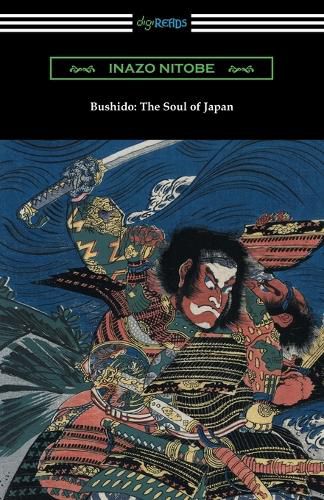Readings Newsletter
Become a Readings Member to make your shopping experience even easier.
Sign in or sign up for free!
You’re not far away from qualifying for FREE standard shipping within Australia
You’ve qualified for FREE standard shipping within Australia
The cart is loading…






This title is printed to order. This book may have been self-published. If so, we cannot guarantee the quality of the content. In the main most books will have gone through the editing process however some may not. We therefore suggest that you be aware of this before ordering this book. If in doubt check either the author or publisher’s details as we are unable to accept any returns unless they are faulty. Please contact us if you have any questions.
Bushido, which literally means the way of warriors is a code of conduct, based upon a set of honors and ideals associated with the samurai way of life, that has greatly influenced the culture and people of Japan. The origin of bushido likely dates to sometime between the 16th and 20th century in Japan, though some scholars argue that it may have been built upon much earlier traditions. Born from the Neo-Confucianism of the Edo period, bushido emphasizes the eight virtues of righteousness, heroism, compassion, respect, honesty, honor, loyalty, and self-control. Noted diplomat, statesman, economist, educator, and author, Inazo Nitobe helped to introduce the culture of Japan to a western audience. Today he is best remembered for his work Bushido: The Soul of Japan . First published in English in 1900, the work explores how the influence of the ancient code of bushido has had such a lasting effect on the culture and traditions of Japan. Drawing in the eastern traditions of Buddhism, Shintoism, and Confucianism, Nitobe compares and contrasts bushido with the foundations of Western culture finding common ground in the spirit of medieval chivalry and the ethos of ancient Greece. While criticized in Japan contemporarily for presenting bushido from too Western of a perspective, the work is today recognized as a classic on the subject. This edition is printed on premium acid-free paper and includes an introduction by William Elliot Griffis.
$9.00 standard shipping within Australia
FREE standard shipping within Australia for orders over $100.00
Express & International shipping calculated at checkout
Stock availability can be subject to change without notice. We recommend calling the shop or contacting our online team to check availability of low stock items. Please see our Shopping Online page for more details.
This title is printed to order. This book may have been self-published. If so, we cannot guarantee the quality of the content. In the main most books will have gone through the editing process however some may not. We therefore suggest that you be aware of this before ordering this book. If in doubt check either the author or publisher’s details as we are unable to accept any returns unless they are faulty. Please contact us if you have any questions.
Bushido, which literally means the way of warriors is a code of conduct, based upon a set of honors and ideals associated with the samurai way of life, that has greatly influenced the culture and people of Japan. The origin of bushido likely dates to sometime between the 16th and 20th century in Japan, though some scholars argue that it may have been built upon much earlier traditions. Born from the Neo-Confucianism of the Edo period, bushido emphasizes the eight virtues of righteousness, heroism, compassion, respect, honesty, honor, loyalty, and self-control. Noted diplomat, statesman, economist, educator, and author, Inazo Nitobe helped to introduce the culture of Japan to a western audience. Today he is best remembered for his work Bushido: The Soul of Japan . First published in English in 1900, the work explores how the influence of the ancient code of bushido has had such a lasting effect on the culture and traditions of Japan. Drawing in the eastern traditions of Buddhism, Shintoism, and Confucianism, Nitobe compares and contrasts bushido with the foundations of Western culture finding common ground in the spirit of medieval chivalry and the ethos of ancient Greece. While criticized in Japan contemporarily for presenting bushido from too Western of a perspective, the work is today recognized as a classic on the subject. This edition is printed on premium acid-free paper and includes an introduction by William Elliot Griffis.